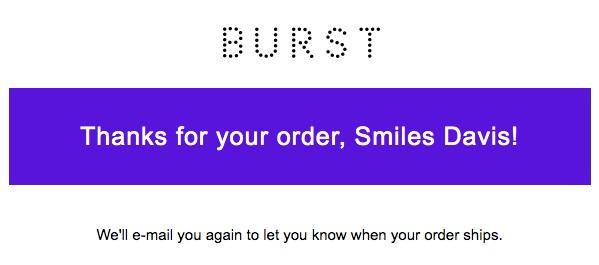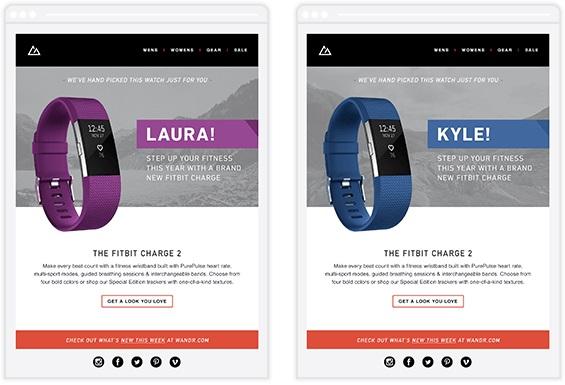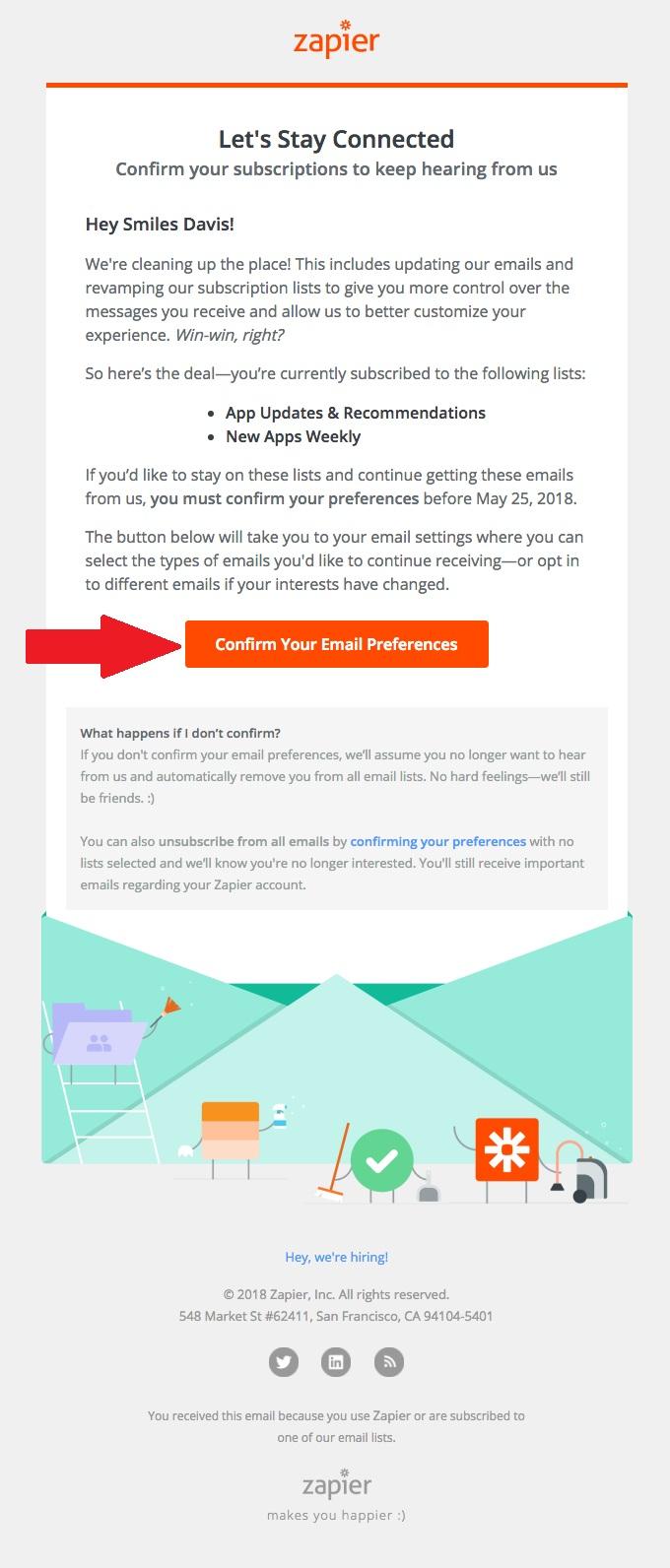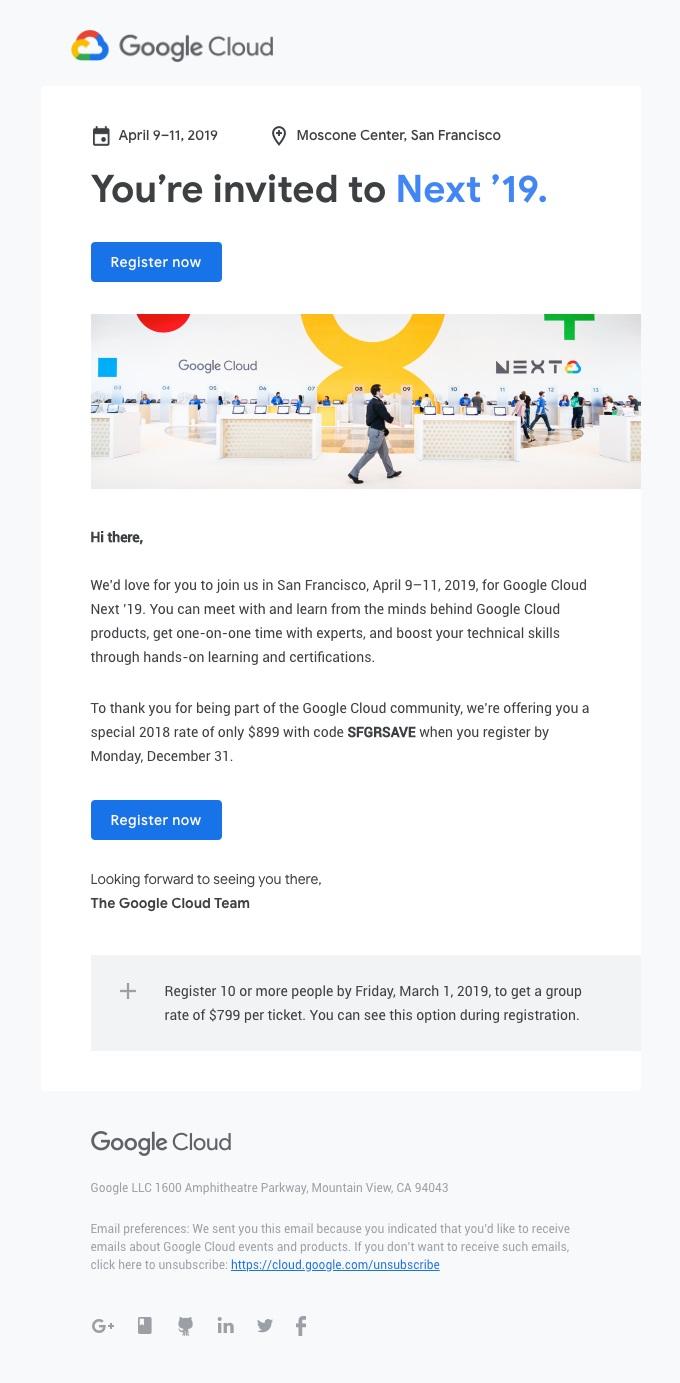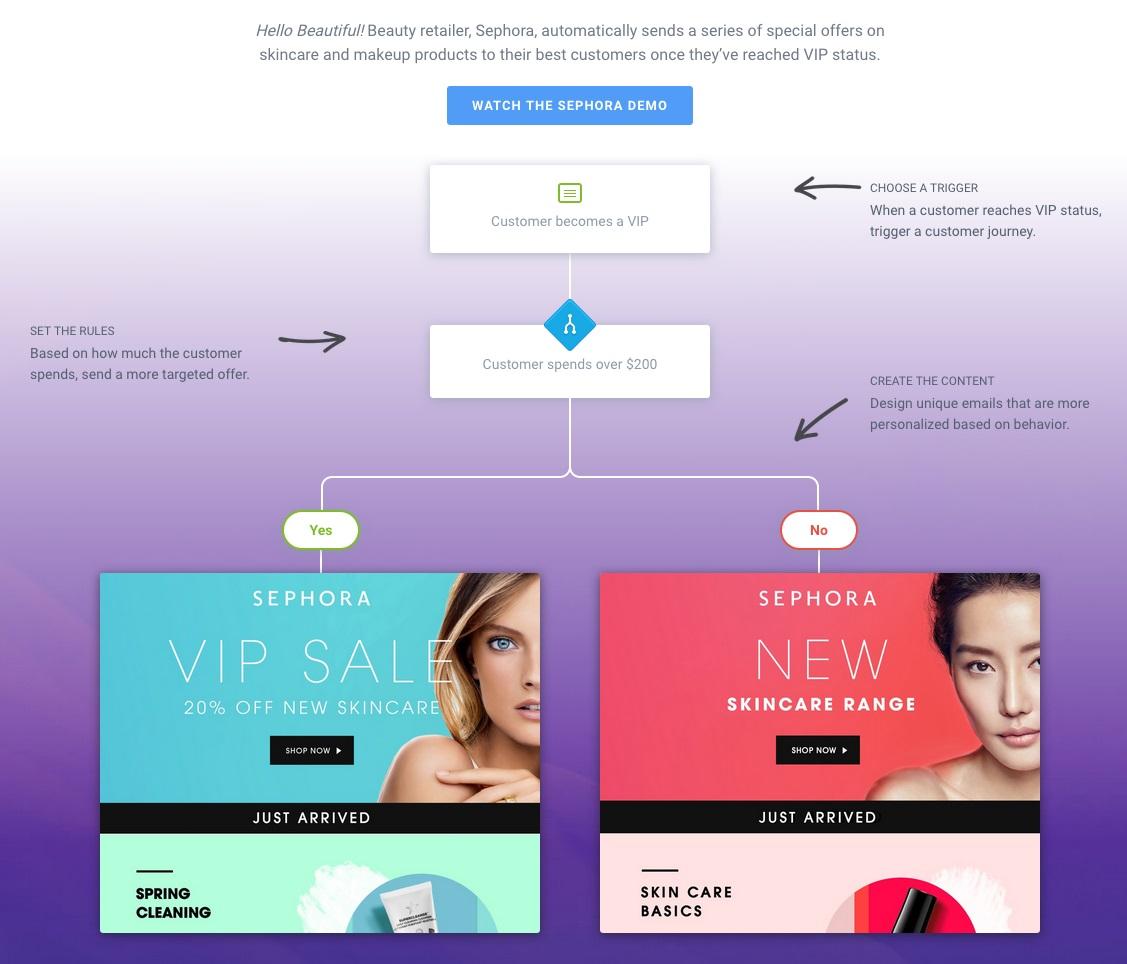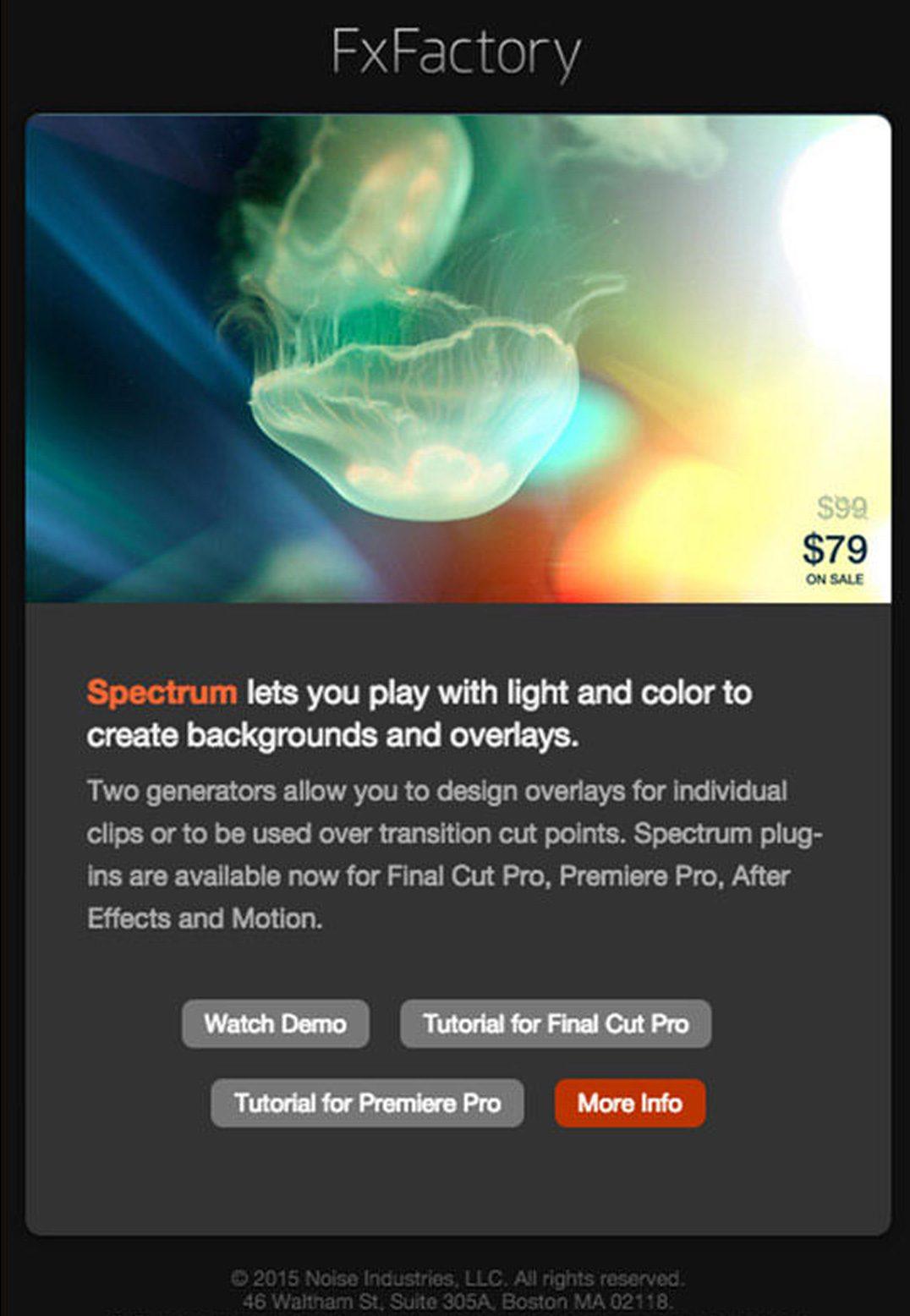4 Easy ways to collect more subscriber data

While many of us email marketers know just how vital email subscribers are to the overall sales cycle, it's critical to never lose sight of the important, relevant content that they are receiving.
However, to create the most relevant content, you need to know exactly who you're speaking to and getting to know your audience members can be difficult if you aren’t asking for the right subscriber data.
The average email subscription form looks something like this:
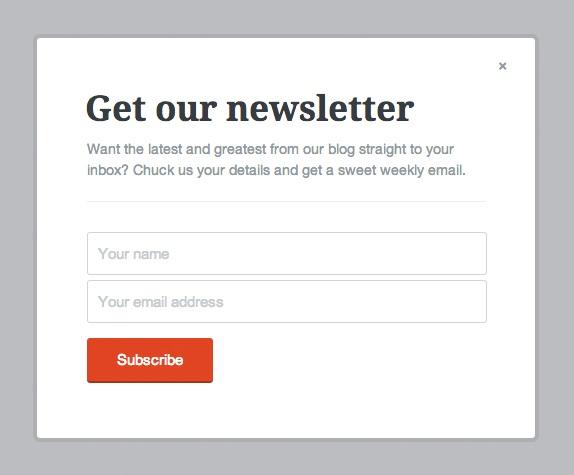
Source: Campaign Monitor
While your subscriber’s name and email address are both vital pieces of information, it doesn’t tell us much about the person behind the email. Before we get too far ahead of ourselves, let’s refresh ourselves on your subscriber’s data is so important.
Why subscriber data is important
When someone decides to subscribe to your email list, chances are they what more information from you. However, in order to give them relevant content to keep them coming back for more, you need to know why they’ve come to you.
That’s why many brands have since evolved from the traditional name and email form to something more detailed. Consumers have come to expect a 1:1 experience from brands, and if they’ve come to you, you need to make sure you are taking every avenue you can to provide them that customized experience. The absolute best way to do this is through email personalization.
Source: Really Good Emails
Email personalization
Email personalization is the practice of using your subscriber data within your email content. This ensures that your content is tailored to each reader and their specific needs. While many marketers know that adding their reader’s first name (or both first and last name) is one way of personalizing emails, that’s not all there is to offer when it comes to tailoring your message to specific readers.
While personalized email subject lines are 25% more likely to be opened, 74% of marketers state that more tailored, targeted personalization increases customer engagement rates.
However, if you aren’t collecting enough data on your subscribers, you won’t have much opportunity for further personalization. The more data you have on your subscribers, the easier it is to segment your email lists.
Email segmentation and personalization
Email segmentation, also known as audience segmentation, helps marketers to send the most relevant content to their readers. Let’s face it, simply sending the same blanket email to everyone on your subscriber’s list is a good way to have your marketing content marked as spam.
For instance, say you have two new subscribers to your marketing blog: one that is interested in general marketing and one that is interested in email marketing for universities. While the two may be interested in the same broader niche, one is clearly looking for specific material, meaning they would benefit more from a more tailored experience.
Again, you can’t provide that tailored experience if you aren’t collecting the right subscriber data from the beginning. Once you’ve started collecting more detailed information from your subscribers, you can start segmenting your audience into different email lists.
There are countless different ways to segment your email lists, including:
-
Location
-
Interests
-
Preferences
-
Gender
-
Age
-
Activity
-
Browsing history
-
Purchase history
-
Buyer persona
-
Job Title
-
Birthday
-
Subscription anniversary
-
Event attendance
-
Business industry
-
VIPs
-
Income
-
Level of Education
Source: Emma
If your current email subscription form only includes fields for user’s names and email addresses, there is no real way to collect the necessary information to create these tailored messages for your readers.
Our advice? Update your forms to collect a little more information from future subscribers or include a preference center for users to customize upon signing up for your newsletter. Lastminute.com does an excellent job of creating a preference center that users can customize in order to receive only the most relevant content in their inbox.
Source: Campaign Monitor
4 ways to collect more data from your current subscribers
While updating your current subscription forms is a great first step to collecting more subscriber data from future subscribes, what about your current subscribers? Don’t fret, because there are several different ways to collect updated subscriber data from your current subscribers that fall under current email marketing laws and regulations.
If you are at a loss of where to start, why not consider one of these 4 suggestions for collecting subscriber data from your current subscribers?
Update personal preferences
While a preference center may be a new addition to your subscribing option, that doesn’t mean you can’t use it to collect information from your previous subscribers! If you’ve newly added a preference center, then why not send your email list a reminder to update their personal preferences?
Source: Really Good Emails
These personal preference centers are one of the absolute best ways to collect information from new and current subscribers. Depending on your industry niche, you can include questions on them as readers, how often they wish to receive information and more.
Event invitations
Another excellent way to collect more subscriber information from current subscribers is by inviting them to either a virtual or in-person event. When sending out even invitation, you’ll need to collect pertinent information, including name, contact information, and specific reservation information that will depend on the event.
Source: Really Good Emails
When it comes to industry-specific events, such as this Google event, you can collect even more relevant subscriber data that can be put to good use, such as:
-
Industry interests
-
Learning interests
VIP content subscription
Ready to up your subscription by providing VIP or gated content? Then use this opportunity to find out more information about your subscribers. If your readers are interested in more deals or more valuable content, then you need to genuinely get to know them and their preferences in order to provide them with only the best you have to offer.
Source: Campaign Monitor
For retail brands, this could mean learning more about your shopper’s spending habits and segmenting them into purchasing brackets or by their browsing or purchase history. For those who aren’t as product-based, you’ll want to find out what interests your subscribers have and what they are interested in learning more about.
Remember, the entire point of VIP status or gated content is to provide better deals or more in-depth content to these users. They’ve met your requirements or have paid to enter this special community, so you need to provide worthy content to suit their needs.
Forms for downloadable content or more information
Want to give your users a reason to provide you with more subscriber information? Then why not offer them some incentives?
Freemiums, tutorials, e-courses, and simple requests for “more information” are great ways to entice your current subscribers into filling out a form in order to receive their incentive. Depending on what you are offering your readers, you could ask for:
-
Topics of interest
-
Their current job positions
-
Why they are looking for this specific information and more
Source: Campaign Monitor
What not to do when collecting subscriber data
While collecting subscriber data is essential to your marketing efforts, there are ways to go about it and ways you shouldn’t.
First of all, you shouldn’t prompt users for personal information such as sensitive information. Banking information, addresses, and social security information should never be collected simple to be collected. There is too much risk on the internet to be asking that of your subscribers. Location, on the other hand, can be useful, but that doesn’t mean you need to ask them for their street address. Unless you are physically sending them a product, then you should be okay with their general state or county when trying to identify where your subscribers are located.
You also never want to spam your readers for their information on the first contact with them. Extensive signup forms tend to scare off potential subscribers simply because you have yet to prove to them that you are a genuinely trustworthy source and have yet to provide them with any relevant information. For an initial sign up, stick to the basics:
-
First/Last Name
-
Birthday
-
Email
-
Company
-
Country
From there, you can always guide your new subscribers to a preference center to fill out more detailed information.
Wrap up
While many marketers are focused on simply getting subscribers, if you are planning to segment or personalize your content to your reader's needs, you have to have adequate ways to learn more about them. If you’ve newly set up a method that collects more data from new subscribers, that’s great! However, you still need to work on collecting relevant data from your current subscribers.
If you are lacking in the ideas department here are few ways to get you started:
-
Ask your subscribers to update their personal preferences
-
Invite subscribers to events
-
Offer opportunities for joining a VIP or gated community
-
Offer incentives for readers to fill out forms to receive freemiums, downloadables and more
Need help growing your email list for free? Then check out our helpful tips and tricks today.
MOST RECENT ARTICLES
Want to engage your audience and grow your brand? Try Emma's robust easy-to-use product today.
